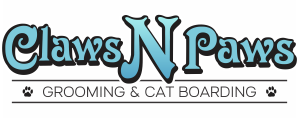 Hip dysplasia is common in large breed dogs. This condition is hereditary and amplified by environmental conditions such as excessive growth, weight, diet, and exercise.
Hip dysplasia is common in large breed dogs. This condition is hereditary and amplified by environmental conditions such as excessive growth, weight, diet, and exercise.
What is Hip Dysplasia?
In order to understand this common skeletal condition, you need to know the basic anatomy of the hip. The hip joint consists of a ball and socket. In dogs with hip dysplasia, the hip joint fails to develop properly. It rubs and grinds against the socket, as opposed to sliding smoothly. Over time, the joint deteriorates and eventually becomes unusable.
Hip dysplasia reduces quality of life as it causes pain and discomfort for dogs affected. Some dogs begin showing symptoms of this condition as puppies, although symptoms are more common later in life. The severity of symptoms depends on the level of inflammation. Common symptoms include:
- Decreased activity
- Decreased range of motion
- Difficulty rising, jumping, and running
- Pain
- Stiffness
- Lameness
- Narrow stance
- Swaying gait
- Audible grinding of the hip joint
- Loss of muscle mass in the thighs
If your pet is exhibiting any symptoms of hip dysplasia, it’s important to discuss your concerns with your vet. Your veterinarian can help you determine if your pet is suffering from hip dysplasia through physical examination and x-rays. Proper diagnosis is important, as the type of treatment used depends on the severity of the condition.
Hip Dysplasia Treatment
Treatment for hip dysplasia commonly revolves around lifestyle changes. It’s important that your dog loses weight to remove any additional stress to the joint. Physical therapy and anti-inflammatory medications are often recommended. You may wish to restrict your pet’s activity as well.
Surgery might be necessary if symptoms are severe. The most common surgeries used to treat hip dysplasia include:
- Double or triple pelvic osteotomy
- Femoral head osteotomy
- Total hip replacement
Special Consideration – Grooming
Dogs with hip dysplasia often have difficulty standing. This makes grooming painful and uncomfortable. Many grooming salons are not properly equipped to deal with this common condition. At Claws N Paws Day Spa, we care about your pet. We want to make sure that they are comfortable and safe while in our care. Our salon has a lower tub for easy access by pets with special needs. We also offer grooming on the floor.
Our professional groomers have years of experience working with pets. They know how to ensure your pet’s comfort and safety. Please call 714-962-1005 to schedule a grooming appointment today!

 Recently, tea tree oil has gained popularity for treating skin conditions in humans. This has led to the creation of several veterinary skin care products containing small concentrations of the oil. Unfortunately, numerous pet owners believe that this potent oil is totally safe for use on pets. This simply isn’t true. Using over-the-counter tea tree oil, which contains 60-100% oil, is extremely dangerous to pets. Products used on pets should never contain more than 1% tea tree oil.
Recently, tea tree oil has gained popularity for treating skin conditions in humans. This has led to the creation of several veterinary skin care products containing small concentrations of the oil. Unfortunately, numerous pet owners believe that this potent oil is totally safe for use on pets. This simply isn’t true. Using over-the-counter tea tree oil, which contains 60-100% oil, is extremely dangerous to pets. Products used on pets should never contain more than 1% tea tree oil. Small puppies require regular grooming. This helps them become accustomed to being brushed and bathed. It also helps keep their coat free from tangles and mats. This is especially important for longhaired breeds.
Small puppies require regular grooming. This helps them become accustomed to being brushed and bathed. It also helps keep their coat free from tangles and mats. This is especially important for longhaired breeds. It’s hard to believe that another year has come and gone. If you’re like many Orange County residents, you’ll be celebrating the New Year surrounded by friends and family. If you’ve chosen to enjoy this holiday at home, there are a few things you need to keep in mind.
It’s hard to believe that another year has come and gone. If you’re like many Orange County residents, you’ll be celebrating the New Year surrounded by friends and family. If you’ve chosen to enjoy this holiday at home, there are a few things you need to keep in mind. Most of us view our pets as members of the family. It’s only natural to not want to leave them home when you travel. However, it’s important to plan in advance if you want to take your pet with you on vacation. The following tips can help.
Most of us view our pets as members of the family. It’s only natural to not want to leave them home when you travel. However, it’s important to plan in advance if you want to take your pet with you on vacation. The following tips can help. There’s a lot of debate over whether or not it’s a good idea to let your cat go outside. While many people believe it’s cruel to keep your cat inside, the statistics and facts prove otherwise. Allowing your cat to go outside exposes them to numerous dangers, reducing their lifespan and putting other animals at risk.
There’s a lot of debate over whether or not it’s a good idea to let your cat go outside. While many people believe it’s cruel to keep your cat inside, the statistics and facts prove otherwise. Allowing your cat to go outside exposes them to numerous dangers, reducing their lifespan and putting other animals at risk.